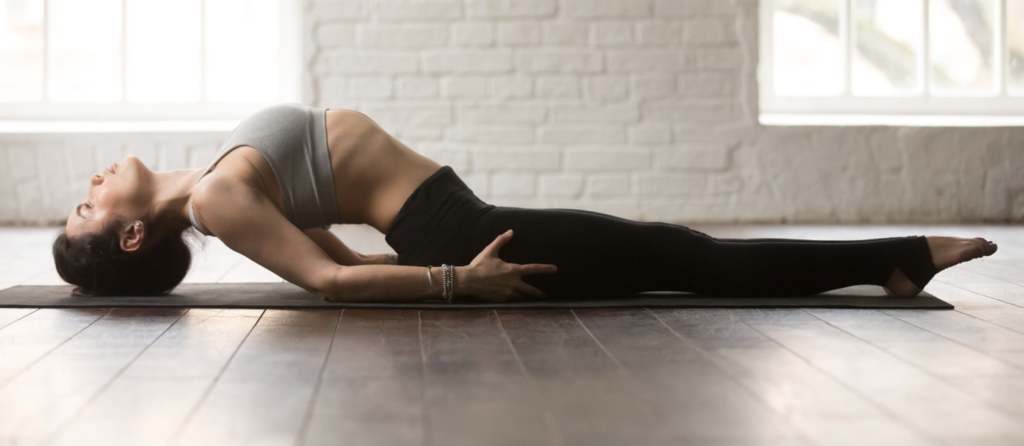Welcome, yogis and yoginis! 🙏 The Fish Pose, known as Matsyasana in Sanskrit, is a delightful backbend that provides a counter-stretch to many forward-bending poses. Let’s explore the pose in depth.

Benefits of the Fish Pose:
- Heart Opener: As a gentle backbend, the fish pose helps in opening up the chest, increasing lung capacity, and promoting better breathing.
- Stimulates Thyroid: With the throat exposed, there is a gentle stimulation of the thyroid gland, which regulates metabolic processes in the body.
- Relieves Tension: By stretching the front of the neck and the shoulders, the pose helps relieve tension in these commonly tight areas.
Breaking Down the Pose:
- Hand Position: Your hands act as a cushion for your hips, making the pose comfortable. Ensure they’re placed properly beneath your hips.
- Safety for the Neck: While there is a natural tendency to place weight on the head, aim to keep the weight on your elbows and forearms, ensuring the neck is free of excessive pressure.
- Breath: Deep, rhythmic breathing is vital, especially given the chest’s expanded position. It helps in maximizing the pose’s benefits.
Modifications:
- For added support: If it’s hard to keep the chest lifted, you can place a yoga block or rolled towel under your back for added support.
- Neck concerns: If the extension of the neck is uncomfortable, you can keep the head lifted slightly or use a thin cushion under your head.
Pairing with Other Poses:
The Fish Pose pairs beautifully with forward bends. After Matsyasana, you can transition into Paschimottanasana (Seated Forward Bend) to give a counter-stretch to your back. It also works well after inversions like the Shoulder Stand (Sarvangasana).
Final Thoughts:
The Fish Pose is a refreshing break from many yoga poses that focus on forward bends and inversions. As always, listening to your body is crucial. Every body is different, and while the pose might look a certain way on one person, it might appear slightly different on another, and that’s perfectly okay.
Practice with patience and persistence. Over time, Matsyasana can become a restful and rejuvenating part of your practice. Namaste. 🌼🧘♂️🕉
